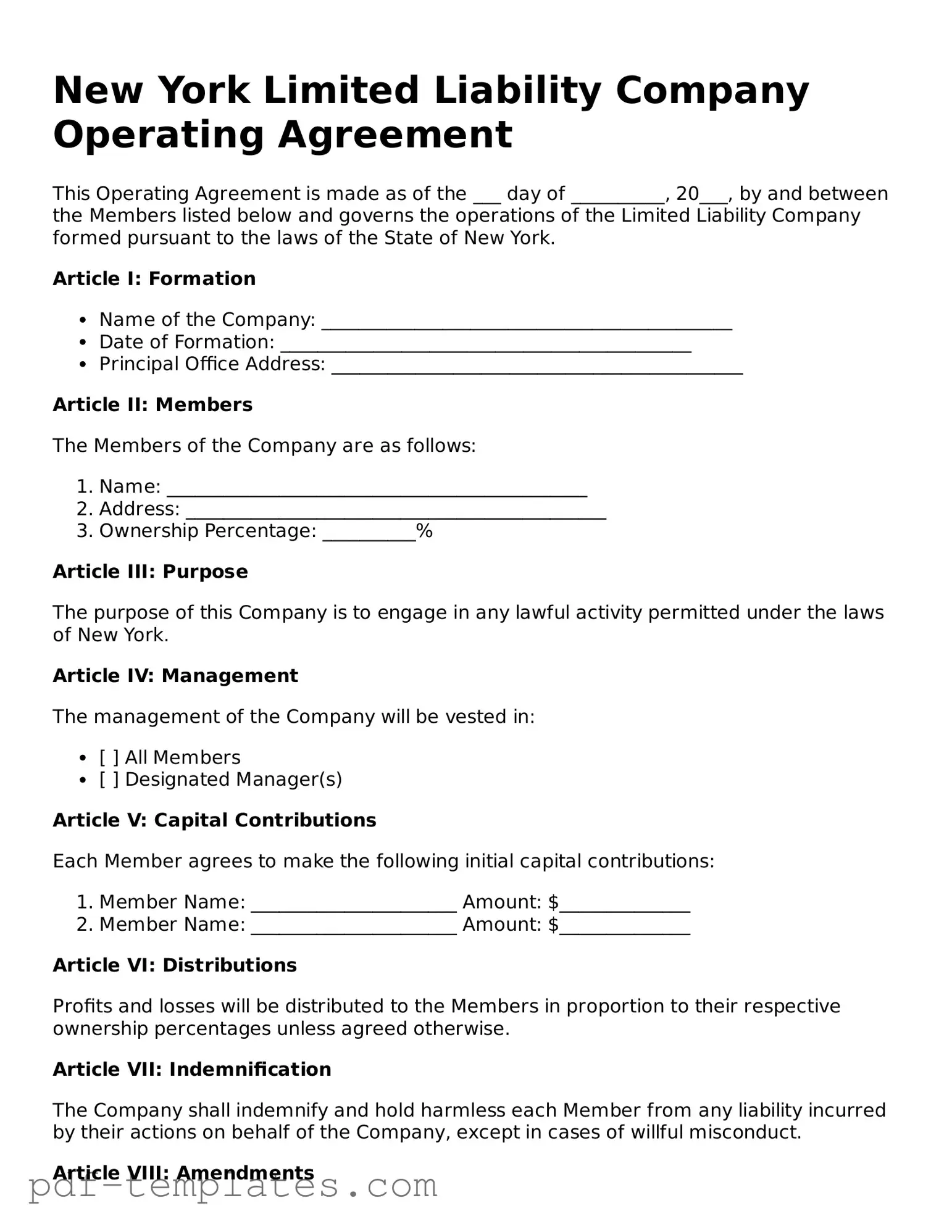The New York Operating Agreement is similar to a Partnership Agreement, which outlines the terms and conditions under which partners operate a business together. Like the Operating Agreement, a Partnership Agreement defines each partner's roles, responsibilities, and profit-sharing arrangements. Both documents aim to establish clear expectations among the parties involved, helping to prevent misunderstandings and disputes down the line.
Another document that shares similarities is the Bylaws of a Corporation. Bylaws serve as the internal rules governing the management of a corporation, much like how an Operating Agreement governs the operations of a Limited Liability Company (LLC). Both documents detail the structure of the organization, including the roles of members or shareholders, decision-making processes, and procedures for meetings. This consistency in structure helps ensure smooth operations and compliance with applicable laws.
The Shareholders' Agreement is also akin to the Operating Agreement. This document is used by corporations to outline the rights and obligations of shareholders. Similar to an Operating Agreement, it addresses issues such as share transfer restrictions, voting rights, and the management of the corporation. Both agreements aim to protect the interests of the parties involved while providing a framework for governance and decision-making.
A Joint Venture Agreement is another document that aligns closely with the New York Operating Agreement. This type of agreement is used when two or more parties collaborate on a specific project or business venture. Like the Operating Agreement, it outlines the contributions of each party, how profits and losses will be shared, and the governance structure. This helps ensure that all parties are on the same page regarding their roles and responsibilities.
The Limited Partnership Agreement shares similarities with the Operating Agreement as well. This document governs the relationship between general and limited partners in a limited partnership. It specifies the roles of each partner, profit distribution, and management responsibilities, much like how an Operating Agreement does for LLC members. Both agreements serve to clarify expectations and protect the interests of the involved parties.
The Membership Agreement is another document that resembles the New York Operating Agreement. This agreement is often used in multi-member LLCs to outline the rights and responsibilities of each member. Similar to the Operating Agreement, it addresses issues such as ownership percentages, decision-making processes, and profit-sharing arrangements. Both documents work to create a harmonious working relationship among members.
The Franchise Agreement is also comparable to the Operating Agreement. This document governs the relationship between a franchisor and franchisee, detailing the rights and obligations of both parties. Like an Operating Agreement, it includes terms related to fees, operational guidelines, and the duration of the agreement. Both documents aim to establish a clear framework for business operations and expectations.
Lastly, the Non-Disclosure Agreement (NDA) can be seen as similar in terms of establishing clear terms, although it serves a different purpose. An NDA protects confidential information shared between parties, while the Operating Agreement governs the operational aspects of an LLC. However, both documents emphasize the importance of clarity and mutual understanding in business relationships, ensuring that all parties are aware of their rights and responsibilities.
